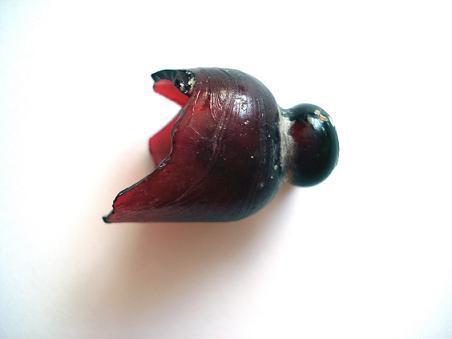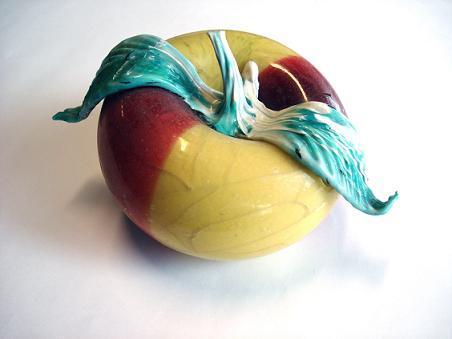Storia del vetro di Murano
Il vetro rubino all'oro venezianoVenetian Gold Ruby Glass

Dopo quanto Ť stato scritto sul vetro rubino di Kunckel, vogliamo ora approfondire la conoscenza di quello fatto dai vetrai muranesi.
Giovanni Darduin ha tratto dalle carte di suo padre NicolÚ, morto nel 1599, una ricetta di rubino fatto con l'oro, ma purtroppo non sono pervenuti oggetti e nemmeno frammenti di questo vetro veneziano del cinque-seicento. Conosciamo alcune ricette della fine seicento- inizi settecento che forse i vetrai muranesi hanno imparato nei loro espatri in Francia. Ci sono pervenuti i vetri rossi soffiati muranesi degli inizi del settecento conservati al castello di Rosenborg, e i documenti d'archivio segnalano questa produzione nei primi quattro decenni del secolo. Ma nel settecento il rubino fatto a Murano serviva soprattutto per decorare i vetri incolore, per fare perle e per i mosaici impiegati nella basilica di S. Pietro a Roma.

After all that has been written about the ruby glass of Kunckel, we now wish to examine what Muranese glassmakers knew about gold ruby. Giovanni Darduin took from the papers of this father NicolÚ, who died in 1599, a recipe of rubin glass made with gold, but no objects or even fragments of Venetian gold ruby made in the late 1500s and early 1600s have survived. We know a number of late 17th- to early 18th-century recipes that Muranese glassmakers may have brought back from their sojourns in France. Blown Muranese ruby glasses made at the beginning of the 18th century are preserved at Rosenborg Castle, and archival documents record its production in the first four decades of that century. However, Muranese gold ruby was principally used in the 18th century to decorate colorless objects, to make beads, and to produce tiles for mosaics in St. Peterís Basilica, Rome.



Paolo Zecchin Via Cappuccina 13 Mestre Venezia
Venetian Gold Ruby Glass
Dopo quanto Ť stato scritto sul vetro rubino di Kunckel, vogliamo ora approfondire la conoscenza di quello fatto dai vetrai muranesi.
Giovanni Darduin ha tratto dalle carte di suo padre NicolÚ, morto nel 1599, una ricetta di rubino fatto con l'oro, ma purtroppo non sono pervenuti oggetti e nemmeno frammenti di questo vetro veneziano del cinque-seicento. Conosciamo alcune ricette della fine seicento- inizi settecento che forse i vetrai muranesi hanno imparato nei loro espatri in Francia. Ci sono pervenuti i vetri rossi soffiati muranesi degli inizi del settecento conservati al castello di Rosenborg, e i documenti d'archivio segnalano questa produzione nei primi quattro decenni del secolo. Ma nel settecento il rubino fatto a Murano serviva soprattutto per decorare i vetri incolore, per fare perle e per i mosaici impiegati nella basilica di S. Pietro a Roma.

After all that has been written about the ruby glass of Kunckel, we now wish to examine what Muranese glassmakers knew about gold ruby. Giovanni Darduin took from the papers of this father NicolÚ, who died in 1599, a recipe of rubin glass made with gold, but no objects or even fragments of Venetian gold ruby made in the late 1500s and early 1600s have survived. We know a number of late 17th- to early 18th-century recipes that Muranese glassmakers may have brought back from their sojourns in France. Blown Muranese ruby glasses made at the beginning of the 18th century are preserved at Rosenborg Castle, and archival documents record its production in the first four decades of that century. However, Muranese gold ruby was principally used in the 18th century to decorate colorless objects, to make beads, and to produce tiles for mosaics in St. Peterís Basilica, Rome.



Paolo Zecchin Via Cappuccina 13 Mestre Venezia
After all that has been written about the ruby glass of Kunckel, we now wish to examine what Muranese glassmakers knew about gold ruby. Giovanni Darduin took from the papers of this father NicolÚ, who died in 1599, a recipe of rubin glass made with gold, but no objects or even fragments of Venetian gold ruby made in the late 1500s and early 1600s have survived. We know a number of late 17th- to early 18th-century recipes that Muranese glassmakers may have brought back from their sojourns in France. Blown Muranese ruby glasses made at the beginning of the 18th century are preserved at Rosenborg Castle, and archival documents record its production in the first four decades of that century. However, Muranese gold ruby was principally used in the 18th century to decorate colorless objects, to make beads, and to produce tiles for mosaics in St. Peterís Basilica, Rome.
